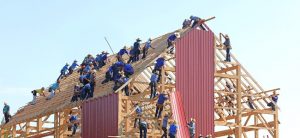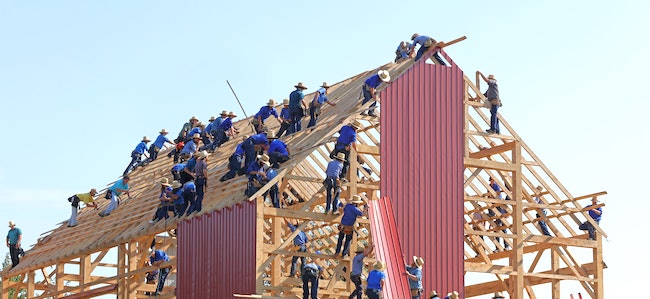
The Mitzva
The Jewish people were instructed to construct a “house of G-d” as a holy sanctuary for the Divine Presence that was to reside within their midst (Shemos 25:8). This took shape in the form of the Mishkan in the wilderness, the portable Sanctuary around which the Children of Israel encamped. The permanent location of the Mikdash, Temple was in Jerusalem to which the people ascended to offer sacrifices and on the Three Pilgrim Festivals.
The concept of building a physical structure on Earth for an Omnipresent G- d, who defies any notion of space, is very difficult.
What does it mean a “house for G-d”? Surely, G-d is Infinite and not subject to containment. So what possible purpose, therefore, does such a construction serve?
Where man fits into the master-plan of creation is his choice to integrate the Infinite G-d into the finite physical climate of our world that is otherwise conditioned to obscure Him.
Of course, G-d is everywhere. But for the most part, He is said to be hidden under the veneer of the natural world with its cause-and-effect set- up that appears to function without His intervention. Still, man has to see G-d beyond the smokescreen. His life is assigned with the objective of gilui kovod malchusoi, “to reveal the Glorious kingdom of G-d within the universe”. That meants to open up his eyes, his heart and his mind to make G-d’s Presence a permanent and integral feature in his life.
It is insufficient for G-d’s Glory to fill the heavenly realms; man craves for the revelation of G-d to similarly fill the earthly, natural world. How can he achieve this? Very simply, explains the Kotzker Rebbe. “Where is G-d? G-d is wherever man lets Him in”.
It is up to man to build the “house”.
That “house” can assume the properties of the Sanctuary in the desert. Or the “house” can take on the form of the magnificent Temple in Jerusalem. Or even, on a microcosmic level, the “house” can be the human body himself.
One common ingredient is necessary: the said edifice becomes the interface between heaven and earth, between spirituality and physicality .
It is the seminal place where the holiness of the worlds above descends and finds its majestic form downwards (Bava Basra 74a). Each house is prepared to become a model sanctuary. Each house is to become a bastion of purity that cannot be contaminated. It is from here that a lighthouse of sanctity and G-dliness will then shine forth outwards and beyond.
In short, it is the focal point of life and existence. Our lives revolve around G-d and his designated repository of holiness. In this vein, the Jewish camp in the wilderness had the Mishkan, Sanctuary at its center. (This was, itself, a reconstruction of the encampment around Sinai when the Chosen People received the Torah). In the Holy Land, the pilgrims from all parts of the land would converge upon the Mikdash, Temple in Jerusalem. And from the perspective of the individual, his first and foremost efforts are channeled into himself.
The house of G-d – and its symbolism – is up for man to build. To be sure, G-d wants to dwell with us, so-to-speak. But we have to want it. We have to open up our various “houses” to let Him in; to crave for His Divine Presence to be at the center of our lives and fill it with meaning and spirituality. And to herald the day when the Temple will be rebuilt and the world will be fill with the faith of G-d.
This week’s essay is dedicated to the memory of my great-aunt Mrs Edith (Gittel) Davidovici who passed away 25 Shevat 5768 The course material is presented by Osher Chaim Levene, author of “Set in Stone: The Meaning of Mitzvah Observance” (Targum/Feldheim), a writer and educator in London.


